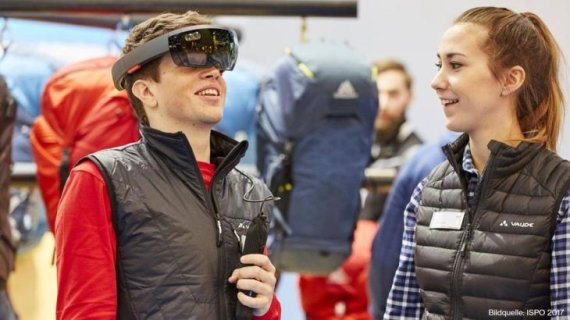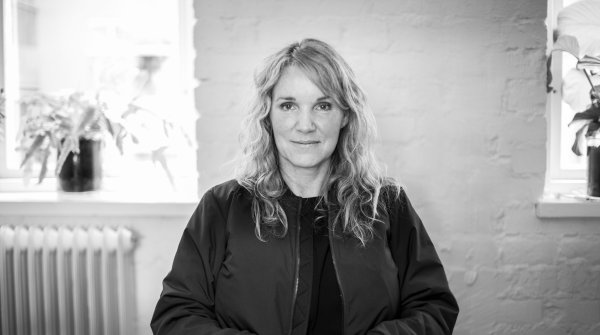
Antje von Dewitz often talks about sustainability – thanks to her ecological and social commitments at Vaude, she is one of Germany’s best-known entrepreneurs. Or about fair working conditions, Vaude once again achieved an audit rate of 100 percent and a benchmark score of 94 percent at this year's Brand Performance Check of the Fair Wear Foundation, which is committed to fair working conditions worldwide. The best rating of all member companies.
A lot is happening at Vaude, including in the area of digitization. Antje von Dewitz explains how her role is connected to the digital transformation of the outdoor business and how she is making her company fit for the future.
ISPO.com: Ms. von Dewitz, digitization represents a big challenge for the industry and retail. Above all, retail still seems to be finding it difficult. How are you supporting them here?
Antje von Dewitz: It’s important to us to support specialist retail in its attempt to get a foothold in the digital world. We’re very loyal to specialist retail and we ourselves don’t sell via an online store. All product orders placed by customers on our website are fulfilled by our connected retailers. We also show whether a product is in stock in nearby stores. Via interfaces, we can easily provide retailers with all the data on our products and our brand, such as 3D drawings, videos, and texts. We produce virtual reality films and augmented reality applications that our stores can use to draw more attention to our products and the topic of sustainability. In addition, we have just launched a digital tent advisor as fewer stores nowadays have the space to display tents.
We are also partly responsible for the retailers’ product range management. What’s more, some retailers work with online stations in-store which, as protracted store counters, are able to access Vaude’s complete product range. We are always happy to support any digital initiative that can help specialist retail.

How open-minded is retail about digitization?
The willingness is there – many retailers are offline experts and are increasingly looking for an opportunity to adapt their knowledge to the online world as well. Requests for help are at extremely high levels, and we want to be the brand that’s known for helping very directly and concretely with this step.
How do you use digital tools outside of retail, say to get in touch with customers?
There’s a load of online platforms we work with and whose scope we benefit from, for example Ifixit.com, a platform for repair manuals. We want our product life to be as long as possible – the longer it’s used, the more environmentally-friendly the product is. On Ifixit, customers can get information on how to properly care for our products, how to repair them, and how to order replacement parts, etc. At the moment, we are also working on an online rental service for select items, mainly travel necessities. We already offer this service through our franchise stores, and are currently working on a digital solution.
You also work with eBay...
Yes, we ourselves don’t sell anything on there, but we want to make it easier for our customers to resell their Vaude products via eBay, and therefore to facilitate a longer product life . We’ve created a valuable environment there that allows customers to resell their products for a better price.
To what extent do you use digital tools internally?
Above all on the product development side, we see big opportunities and still a lot of potential in digitization. We already work with 3D printers and develop our buckles and other items ourselves. Most of all, digitization helps us here at the Tettnang site – where we also have our own production – to become more efficient, with individual production steps displayed via virtual 3D presentation technology helping to save on prototypes and save time.
Our own production is our best practice. We’ll carry on in this direction but, until it works perfectly, a lot of competence still needs to be gained. In addition, we are already working on converting our entire business software. Until now there were different island solutions. Now everything runs via a central database, which is the foundation for further digitization.
How are you managing to take your employees along with you during the transition to digitization?
For digitization to work, it needs appropriate thinking, curiosity, flexibility, trust, and equal footing. For example, we built up our intranet as a kind of social media tool a few years ago, where you can like posts, write comments, share things, etc. This has really encouraged dialog – we’ve received really positive feedback.
Furthermore, the last ten years have seen us develop a really strong culture of trust that encourages our employees to take on more responsibility – a prerequisite for further digitization, in my opinion. Digitization brings a simultaneity of many issues; you have to react more flexibly, more quickly, and more prepared for risks nowadays. Only that way can you remain innovative. We are also trying to support all these innovation processes with structural work.
Individualization is another point that digitization is expected to facilitate. Are you working on similar projects?
We’re currently working on it. Most production takes place in Asia – we’re not particularly far on there. Here in Tettnang we’ve just started our upcycling project, where we aim to manufacture new bags from production remnants. At the same time, this helps with integrating refugees. Customers will also be able to print their own photos on their bags, although this won’t be possible until summer.
How do you shape the communication with the customer – as you, of course, don’t sell directly?
We’ve realized that customers continue to want more direct contact with us, and have therefore built up a complete team in the meantime who occupy themselves with customer communication. Of course, we also use social media and monitor all social media channels that are open for that. Digitization has led to customers knowing more, and knowing more leads to customers being more aware. Of course, that also makes customers more powerful, because they are in the position to reward or punish behavior.
What changes are you expecting in the next few years?
I think things will continue on as they are. The concentration process from the side of retail and brands will unfortunately continue. Professionalization is a must. Even online businesses will open brick-and-mortar stores or enter into partnerships with brick-and-mortar retailers, which will up the pressure even more. It’s conceivable that the best way to survive is to present a strong brand and to position yourself clearly.

What roll does the topic of sustainability play there?
Sustainable products, or rather trustworthy brands, are in very high demand. Customers want to buy with a clean conscience. Retail can use this issue to win over customers with good arguments. Sustainability must be actively communicated though, and brick-and-mortar retail is an important partner for this task. That needs to be understood and taught, though – just like the knowledge of how things work.
Just now you addressed the topic of longevity – how do you aim to achieve this, when the products are simultaneously keeping more and more up-to-date with fashion and therefore have a shorter longevity?
First of all, because our quality is very high and we try year after year to bring down the number of complaints. Right from the design stage, we think of how the product can be repaired. Are zippers and suitcase wheels easy to replace, for example? Similar criteria are defined for every product and compiled in a reparability index.
But of course outdoor products are also modern products today, they must also be fashionable in their own unique way, or nobody will buy them. That means it’s always about getting the balance between wanting to keep up with trends on one hand, and making sure that the product won’t be completely outdated in two years on the other. Finally, to prevent that, we also try to offer at least half of the collection in secure colors. In the long-term, we are working on developing a color pallet that’s completely decoupled from fashion.
Are you also changing the tempo? Digitization enables faster rhythms and a closer proximity to the market.
We’re not planning on turning away from the two-season rhythm. But at ISPO Munich, we’re going to launch a few products that will be immediately available for delivery. It’s normal for us to first present products to retail before we produce them. This time, we’re taking the risk and shortening the process. It’s an experiment, but this way we can bring particularly fashionable or innovative products to market more quickly.
In your opinion, what role can the trade fairs play in digitization?
They have also become important for presenting our digital solutions for our retailers. All the latest developments from the industry can be seen here.
- Awards
- Mountain sports
- Bike
- Fitness
- Health
- ISPO Munich
- Running
- Brands
- Sustainability
- Olympia
- OutDoor
- Promotion
- Sports Business
- Textrends
- Triathlon
- Water sports
- Winter sports
- eSports
- SportsTech
- OutDoor by ISPO
- Heroes
- Transformation
- Sport Fashion
- Urban Culture
- Challenges of a CEO
- Trade fairs
- Sports
- Find the Balance
- Product reviews
- Newsletter exclusive area
- Magazine







